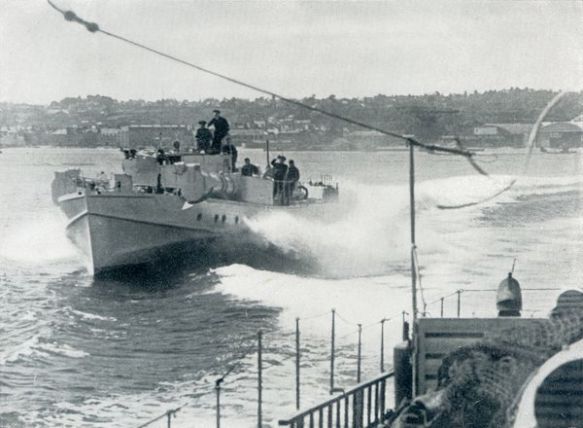
Sirocco (Lt.Cdr. Guillaume Rons Cristophe Marie Joseph Michel de Toulouse-Lautrec) was sunk off Dunkerque on 31 May 1940 by the German motor torpedo boats S-23 and S-26.
The French destroyer Cyclone was hit by a torpedo fired by the German motor torpedo boat S-24. She was badly damaged but was able to sail at a speed of 5 knots. The French Commanding Officer asked the Polish destroyer Blyskawica for escort. The Polish destroyer answered and provided the cover requisted. Both ships then met the French destroyer Sirocco that was loaded with soldiers. She passed nearby and dissapeared in the darkness. After one hour Sirocco was torpedoed and sunk by the German motor torpedo boats S-23 and S-26. Blyscawica left Cyclone. She picked up 15 survivors from the Sirocco. Then she returned to Cyclone and acompanied her to Dover.
#
The S-boat really came into its own at Dunkirk. Britain’s ignominious retreat was at least partly due to the heavy damage caused to Allied shipping by S-boats. First to suffer was the French destroyer flotilla which was inflicting considerable damage on the Wehrmacht in ship-to-shore actions at Boulogne. Lieutenant Gotz von Mirback in S21 and Lieutenant Christiansen in S23 torpedoed and sank Jaguar on the night of 23-24 May 1940. Few days afterwards-on 31 May-Christiansen and Lieutenant Fimmen in S26 crippled the Sirocco, leaving her to be finished off by dive-bombers.
Probably the hardest blow suffered by the Royal Navy during the evacuation was struck by Lieutenant Zimmermann in S30 in the early morning of 29 May. Zimmermann blew apart the old destroyer Wakeful. The minesweeper drifter Comfort went to the rescue but only managed to pick up a handful of the 700 soldiers stranded in the water. Worse was to come. A U-boat and S25 moved in to attack the modern destroyer Grafton. She was hit and sunk by a torpedo from the U-boat. In the near-darkness the sinking Grafton and the minesweeper Lydd mistook the low-lying Comfort for an E-boat. They unleashed a savage barrage of heavy fire on her, and even started machine-gunning her survivors in the water after Lydd had finished the job by ramming.
The sinking of the unarmed liner Meknes became a grisly sequel to Dunkirk. On the night of 25 July 1940, she was carrying 1,100 French sailors for repatriation to Vichy, France. She cleared Portland Bill with all lights blazing to proclaim her neutrality when she was torpedoed and sunk. Lieutenant Klug in S27 was responsible. The Germans claimed they were in strict accordance with international law as they had not been told of the sailing. Some 400 men died.